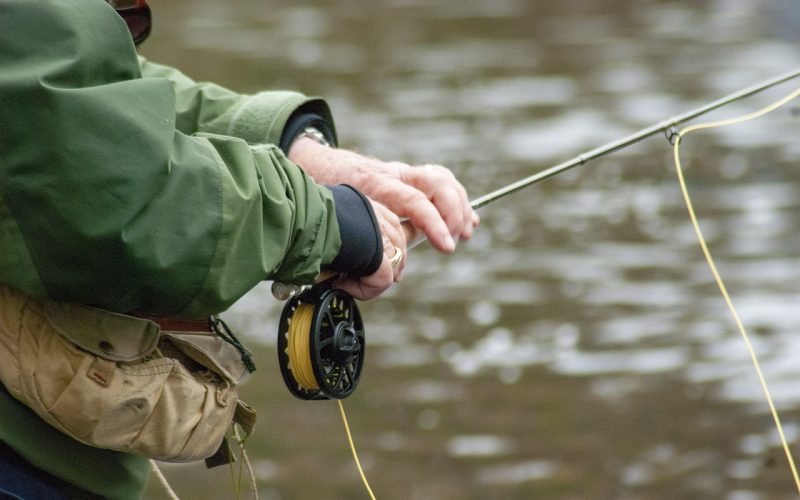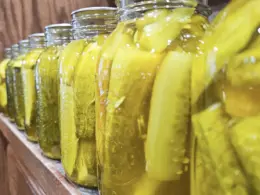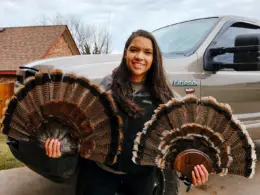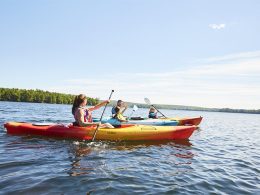There’s a select group of fly anglers that are gonzo for fishing these small tributaries. They spend their days pushing through thick mountain laurel, then sip choice beverages in the evenings, and do a deep dive into google maps looking for those thin blue lines that connect to larger blue ribbon waters.
It’s a whole other subculture of fly fishing, which is already a hobby known for its subcultures. This one is different though and it appeals to the explorer in all of us.
The five W’s of information gathering and puzzle solving is what keeps anglers coming back for more until other forms of fishing become secondary.
Table of Contents
What is Blue Lining?
Have you ever looked at a map and seen the small blue lines of different creeks and rivers that aren’t big enough for the map to name? Well, that’s a blue line. These small bodies of water are what you’ll be fishing.
Now, there’s a process to find fish in these waters that you’ll need to follow. First off, not all blue lines will hold fish. There’s a good chance you’ll get skunked and it’ll happen more than once. That’s just the nature of the beast.

Secondly, and this is where the exploring aspect comes in, blue lining will require some level of physical effort and woodsmanship. These are not normally streams with parking lots and trails. Oftentimes you’ll be traversing through backcountry with thick underbrush to get to the water. You could be hiking anywhere from a quarter of a mile to miles away from your vehicle. You need to be in reasonable shape and have some outdoor experience to ensure your safety.
What to Bring
Finally, you’ll need to bring the appropriate gear to fish these waters. A 9’ 5wt rod will typically be too large, and you’ll find yourself hurling flies into trees, and bushes for most of the day. Get used to bow and arrow casts and roll casts because casting conventionally will not work. Stick with something smaller. No longer than an 8’ rod, but ideally 7’- 7’ 6”. Keep the weight light too. A 3wt or lighter. The flies you’ll be throwing will be on the smaller end.
Waders are great for late fall, winter and early spring. If the weather is nice then feel free to wet wade. Ensure you have comfortable footwear if you plan on hiking. Some of the more expensive wading boots can be great, but if you don’t have a pair then use your normal hiking boots or tennis shoes and pack away your wading boots in a backpack and then change streamside.
For flies, you’ll want them to be smaller. A size 12 wooly bugger is about as big as you want to go, but most of your nymphs and dries will be between a size 16-20.
I like to use flies that cover a wide array of insects. Parachute adams, elk hair caddis, beatles and hoppers are all great dry flies. For nymphs I like to use bead head pheasant tails or copper johns. I usually fish these as a tandem rig.
Also, since you could be several miles from your car you’ll want to bring some survival tools just to be safe. Water and food should always be on your person as well as a lighter and a headlamp. This is the absolute bare minimum that you should be bringing with you into the woods for blue lining. A lot can happen and you need to ensure you can be prepared
Where to Blue Line?
The planning aspect can often be the most fun part about blue lining. Large maps sprawled across table tops with notes scribbled on it were the way anglers found areas before google maps. It can be fun to keep records this way, but the convenience of maps found online is hard to beat.
The first thing you need to do is locate a river that you know holds trout. Then begin looking for tributaries. These are going to be the small blue lines that run into the larger river. You’ll want to map out a couple and then begin looking on satellite images for spots that you can park your vehicle nearby. Often this could be within earshot of the stream. Other times, you may need to hike several miles to get back to the water.
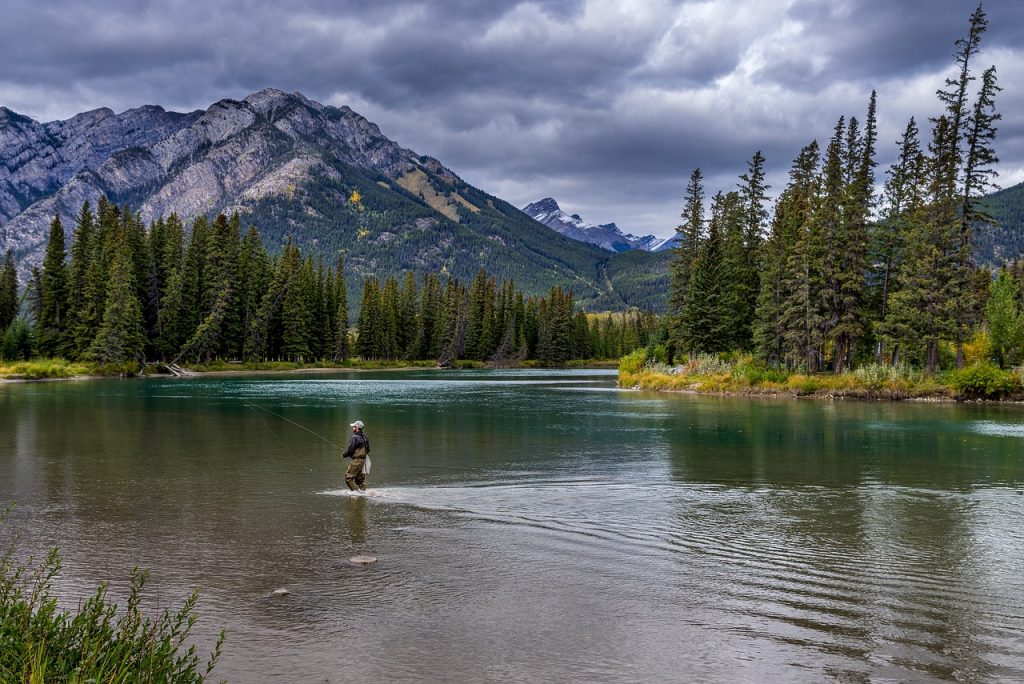
When doing this you need to be mindful of public and private land. Ensure you’re on public land before tromping through the woods. If you can’t find any public land to access the water then seek permission from the landowner first. More often than not they will say yes.
If you’re not comfortable mapping out your own trip then checking the state fish and game website or speaking to folks at the nearest fly shop can be a great help. They won’t give up their best spots but they will help you on your way to becoming more comfortable.
When to Blue Line?
This all depends on your location, the water levels, and the water temperature at the time you plan on fishing. On the east coast of the US you’ll find that Fall, Winter, and Spring will normally provide adequate water levels and temperature for fishing these smaller rivers and creeks.
The summer yields low water and higher water temps. Fish can survive during this time, but the high temperatures mixed with the low water makes them stressed. Catching them and pulling them from the water causes excess stress and can lead to them not being able to acclimate back to the water and can result in them dying.
If you plan on harvesting these fish to eat and are following local fishing laws then feel free to do so. If you are a catch and release angler then I recommend leaving the tributaries alone during these times and try fishing the big water instead. Doing so will yield greater fishing the rest of the year.
Fishing in the western US can be different. The higher elevations of the mountains may mean that winter time is impossible to fish due to excess snow, but then summer time can be the most successful time of the year. Again, if you’re brand new to fly fishing or blue lining, then check in with a fly shop and see what they recommend. Unfortunately there is no one answer that fits all for this question.
Why Blue Lining?
Blue lining is not about catching a handful of quality fish. More often than not, you’ll be catching fish less than a foot long, but most will be in the 6”-8” range. These wild fish will make up for their size with fight and beauty. Wild brook trout, rainbow, and brown trout will normally have more vibrant color patterns and the native brook trout will be abnormally aggressive. Sometimes leaping from the water to take a dry fly, or nearly snatching the rod from your hand when jigging a wooly bugger.
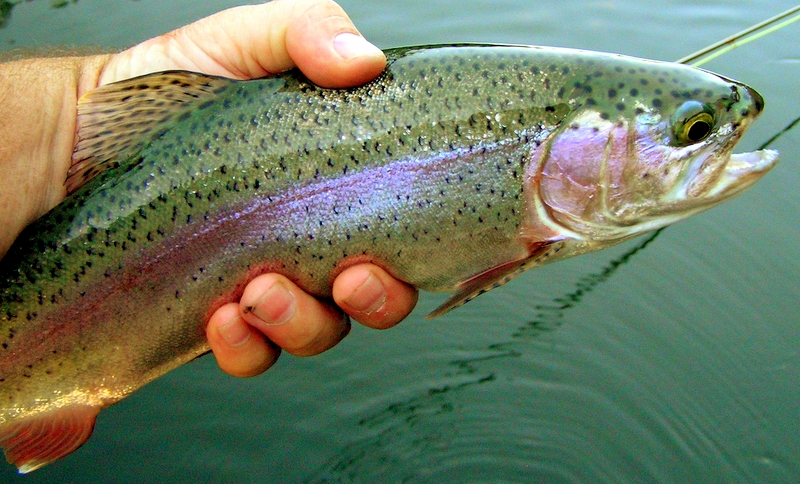
The art of finding, exploring and fishing new waters that only a handful of people may have ever fished is a great feeling. You put in the work researching and hiking to get there and then you’re rewarded with a great day of fishing as well as a secret spot.
You’ll also find yourself fishing these waters alone. Rarely have I ever stumbled across anyone else when blue lining let alone another angler. So, if you prioritize privacy while fishing then blue lining is right for you.
Who Should Blue Line
As I mentioned earlier, when blue lining you’ll need to be prepared to put some miles on your shoes. Typically, this isn’t the easiest country to traverse too, so you’ll need to be in decent shape if you want to give yourself the best opportunity to catch these fish.
Also, someone who is comfortable walking in the woods without a trail. If that makes you uncomfortable then using a GPS that shows your location as well as where you parked your car. I’d recommend this for any angler though. It can be easy to get turned around in the woods, or get caught up in fishing and then you have to walk back to your car in the dark.
In the end though it doesn’t really matter what level of angler you are. Beginners and experts can all go out and experience success and failures fishing this way.
Conclusion
If you find yourself in a rut and looking to try some new types of fishing then give blue lining a shot. It can be great to rejuvenate your love of fishing or to give you a new challenge. On top of that you’ll also find yourself locating new fishing spots that maybe only a handful of other people even know about.
So, hop on google maps, find those thin blue lines that run through your state and start mapping out a great day of fishing.

